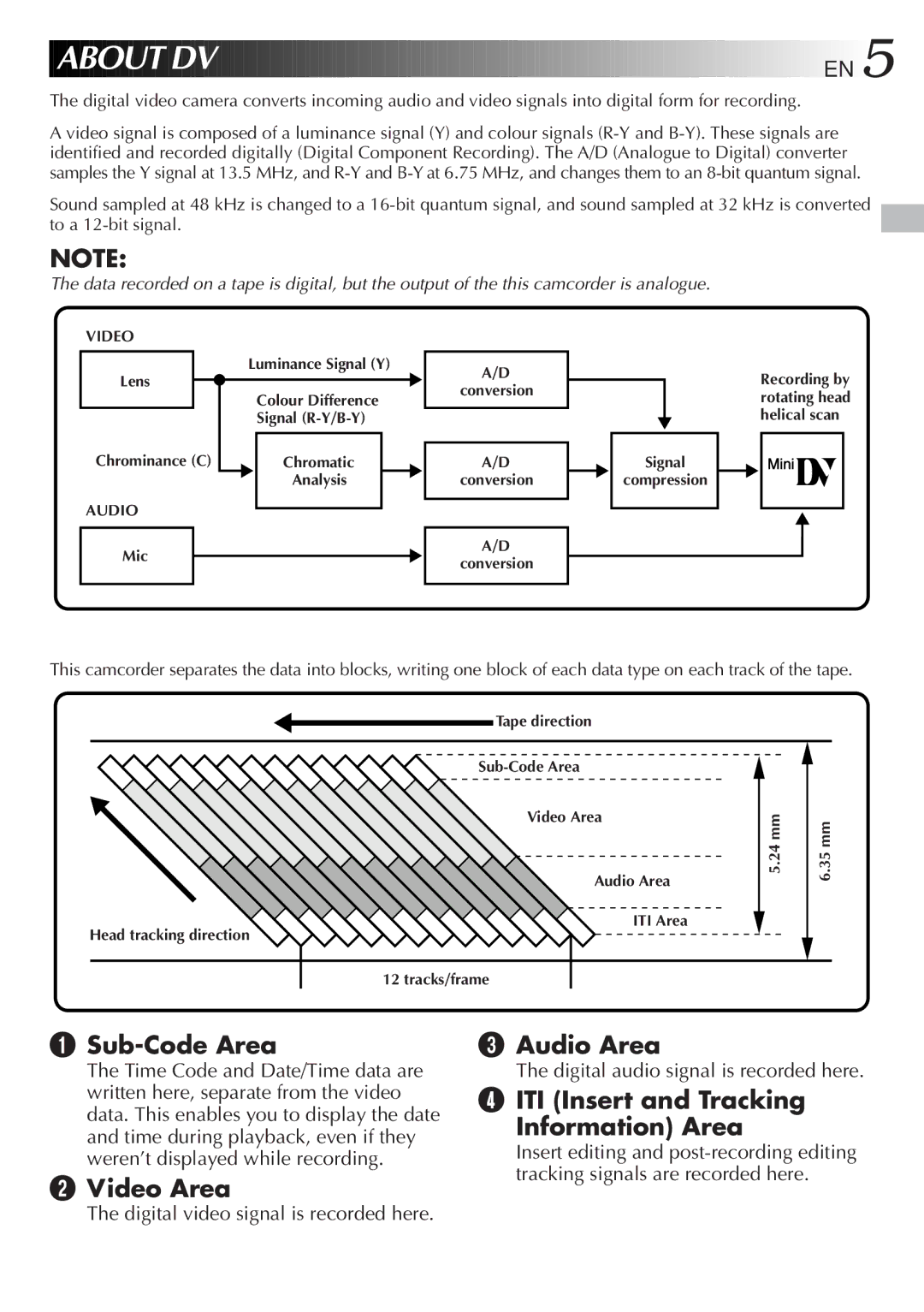
 ABOUT
ABOUT
 DV
DV

























































































 EN
EN 5
5
The digital video camera converts incoming audio and video signals into digital form for recording.
A video signal is composed of a luminance signal (Y) and colour signals
Sound sampled at 48 kHz is changed to a
NOTE:
The data recorded on a tape is digital, but the output of the this camcorder is analogue.
VIDEO
Lens | Luminance Signal (Y) | A/D |
| ||
| conversion | |
| Colour Difference | |
|
| |
| Signal |
|
Chrominance (C) | Chromatic | A/D |
| Analysis | conversion |
AUDIO |
|
|
Mic |
| A/D |
| conversion | |
|
|
Recording by rotating head helical scan
Signal
compression
This camcorder separates the data into blocks, writing one block of each data type on each track of the tape.
Tape direction
Video Area
Audio Area
ITI Area
Head tracking direction
5.24 mm
6.35 mm
12 tracks/frame
1Sub-Code Area
The Time Code and Date/Time data are written here, separate from the video data. This enables you to display the date and time during playback, even if they weren’t displayed while recording.
2Video Area
3Audio Area
The digital audio signal is recorded here.
4ITI (Insert and Tracking
Information) Area
Insert editing and
The digital video signal is recorded here.
